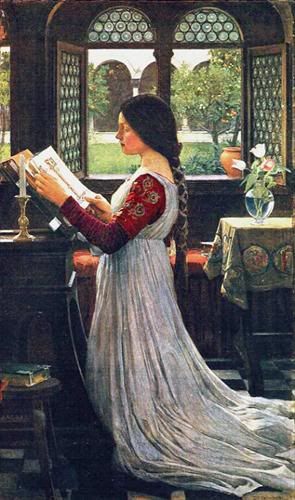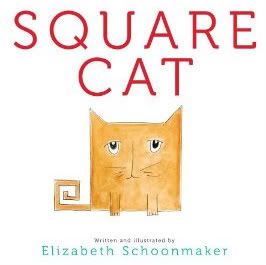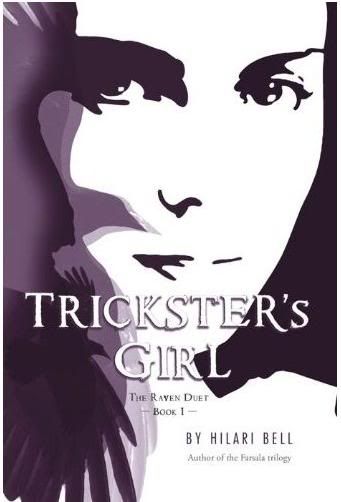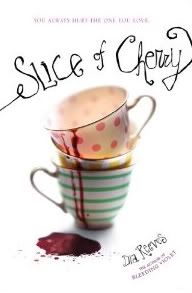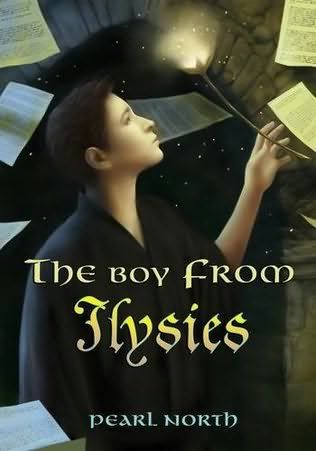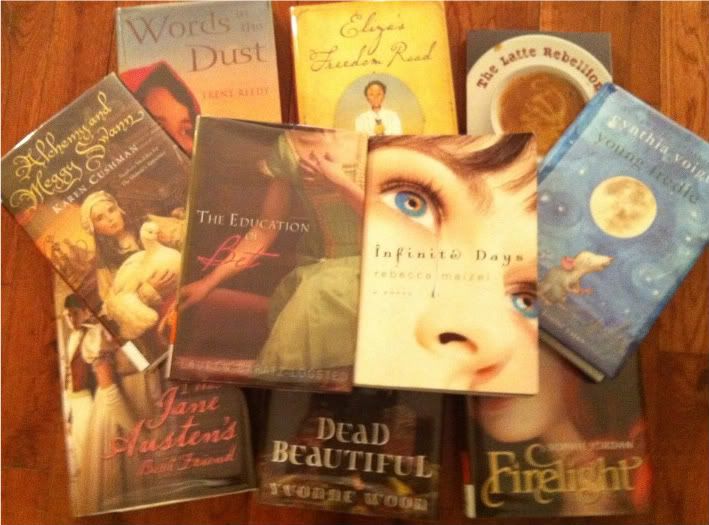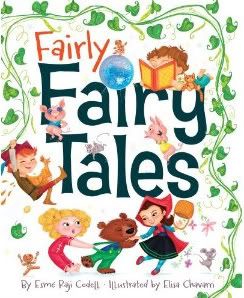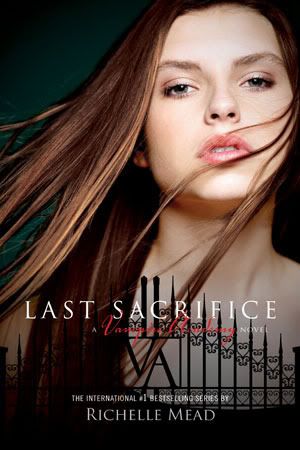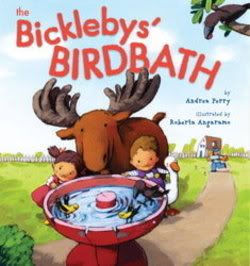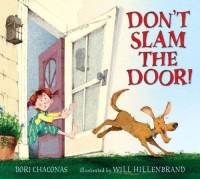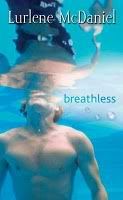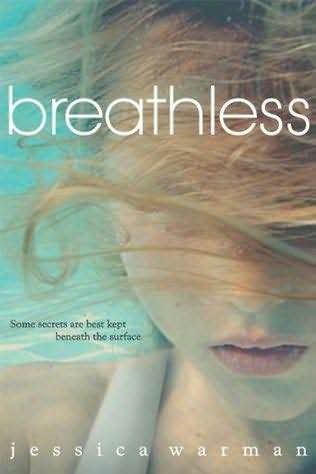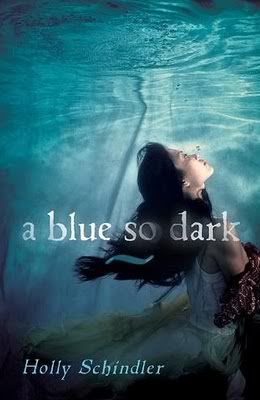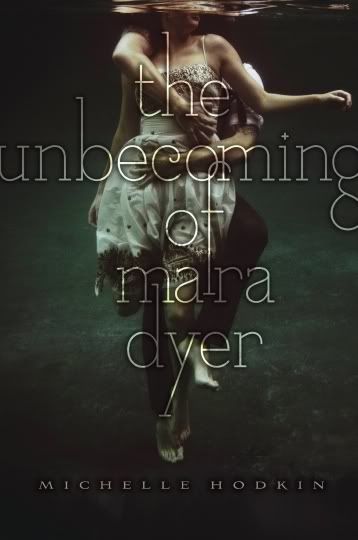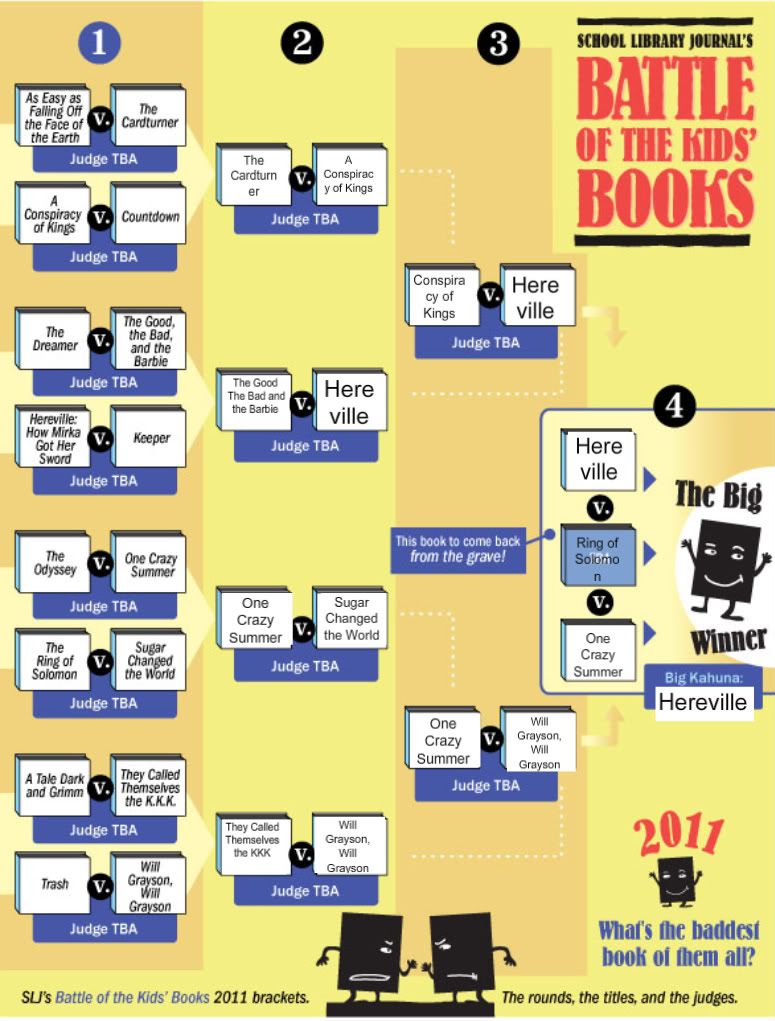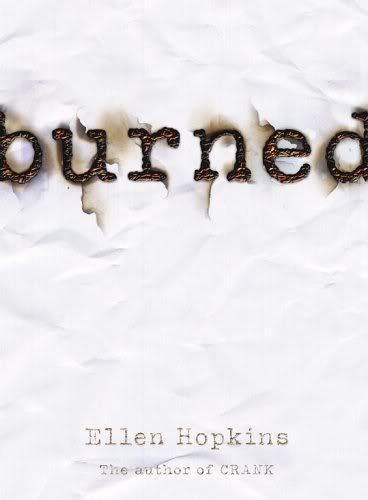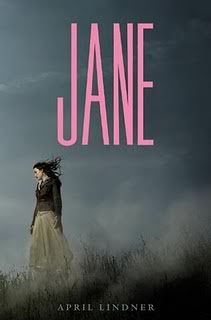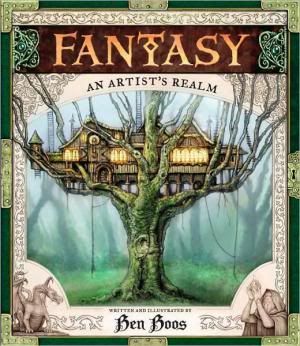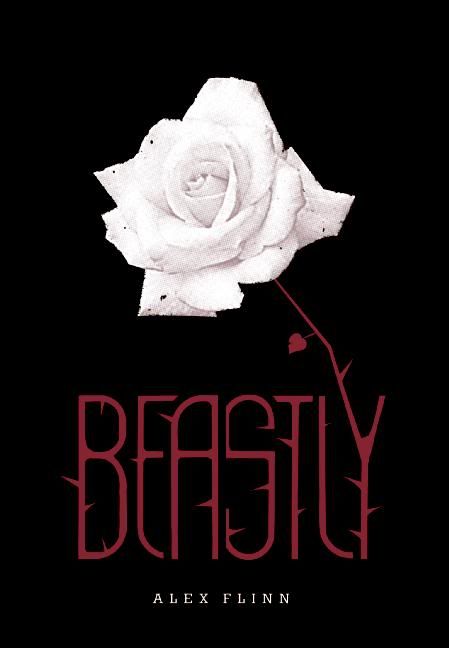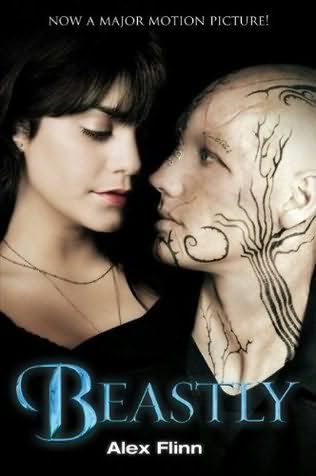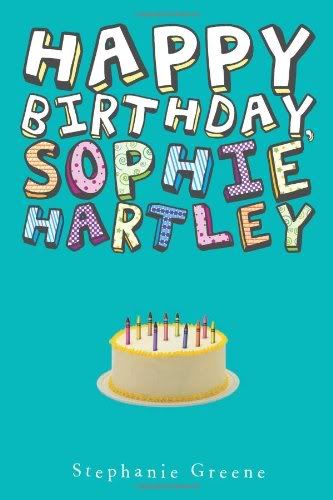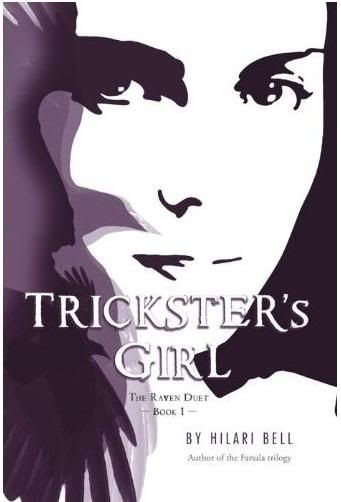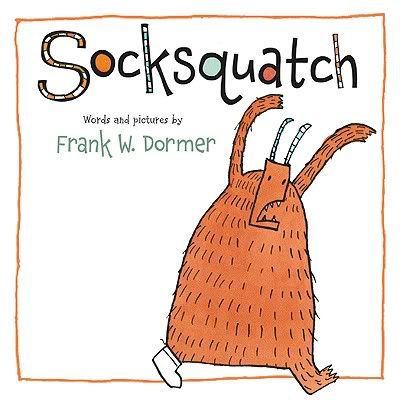Monday, February 28, 2011
Read in February
This month I read the following books:
1 Rude Awakenings of a Jane Austen Addict - Laurie Viera Rigler
2 Minder - Kate Kaynak
3 Slice of Cherry - Dia Reeves
4 Across the Universe - Beth Revis
5 XVI - Julia Karr
6 The Great Wall of Lucy Wu - Wendy Wan-Long Shang
7 Trickster's Girl - Hilari Bell
8 Delirium - Lauren Oliver
9 Angelfire - Courtney Allison Moulton
10 Jenna & Jonah's Fauxmance - Emily Franklin & Brendan Halpin
11 Season of Secrets - Sally Nicholls
12 Athena: Grey-Eyed Goddess - George O'Connor
13 Infinite Days - Rebecca Maizel
14 The False Princess - Eilis O'Neal
Picture credit: The Missal by John William Waterhouse
Sunday, February 27, 2011
In My Shopping Bag
This isn't exactly an "in my mailbox" post per se... but I did hit up my local Borders this week to take advantage of their 20-40% closing sale. So, here is what was in my shopping bag.
I picked up a few novels that I've been meaning to read, as well as some promising looking picture books.
I picked up a few novels that I've been meaning to read, as well as some promising looking picture books.
Saturday, February 26, 2011
Square Cat review
Square Cat
by Elizabeth Schoonmaker
Aladdin
January 2011
In this tale about fitting in, Eula the square cat longs to be round like her friends. Looking forlornly around, she finds that mouse holes are impossible, tipping over is a constant problem, and that she looks terrible in stripes. Depressed, she loses her purr, and two of her friends set about cheering her up. They try out wearing some cardboard boxes to give Eula some solidarity in her squareness and point out that while stripes don't work, she'd look fetching in checkerboard, that cubist paintings of cats are priceless and that mouse holes are difficult for any cat, no matter their shape. The next time Eula tips over, she realizes that only a square cat could have this view and begins to purr again.
Plenty of white space is used in the ink and watercolor illustrations, lending a spare, clean look to the book. Eula's orange fur and Greek-key shaped tail stand out sharply from the plain white background. This is a strong debut by Schoonmaker, with a nice message about self-acceptance and how the power of friendship can lift one out of a bad mood. Recommended for cat-lovers of all ages and for anyone who's ever felt like a square peg in a round hole.
I borrowed this book from the library.
by Elizabeth Schoonmaker
Aladdin
January 2011
In this tale about fitting in, Eula the square cat longs to be round like her friends. Looking forlornly around, she finds that mouse holes are impossible, tipping over is a constant problem, and that she looks terrible in stripes. Depressed, she loses her purr, and two of her friends set about cheering her up. They try out wearing some cardboard boxes to give Eula some solidarity in her squareness and point out that while stripes don't work, she'd look fetching in checkerboard, that cubist paintings of cats are priceless and that mouse holes are difficult for any cat, no matter their shape. The next time Eula tips over, she realizes that only a square cat could have this view and begins to purr again.
Plenty of white space is used in the ink and watercolor illustrations, lending a spare, clean look to the book. Eula's orange fur and Greek-key shaped tail stand out sharply from the plain white background. This is a strong debut by Schoonmaker, with a nice message about self-acceptance and how the power of friendship can lift one out of a bad mood. Recommended for cat-lovers of all ages and for anyone who's ever felt like a square peg in a round hole.
I borrowed this book from the library.
Friday, February 25, 2011
Poetry Magnets
I'm rather fond of poetry magnets, and have collected several sets over the years. Here's a grouping from my Jack Prelutsky Awful Ogre's Awful Day set. Somewhere I have a "ransom letter" set from Lemony Snicket's Series of Unfortunate Events, as well.
Several years ago, I had a set of poetry magnets at the library, and the teens loved them. Maybe it's something I should try again. They're not too expensive, either. The original website, Magnetic Poetry, still offers lots of different word collections.
Several years ago, I had a set of poetry magnets at the library, and the teens loved them. Maybe it's something I should try again. They're not too expensive, either. The original website, Magnetic Poetry, still offers lots of different word collections.
Thursday, February 24, 2011
Organizing the Bookcase video
Wow, this has got to be the neatest stop-gap animation ever. I love seeing bookshelves organized by color.
Wednesday, February 23, 2011
Trickster's Girl review
Trickster's Girl
by Hilari Bell
Houghton Mifflin Books for Children
January 2011
Set nearly a hundred years in the future, Kelsa Phillips is devastated at the passing of her beloved father. Kelsa's mother seemed pretty cold about the whole thing, she must have either come to terms with his imminent death of her husband much earlier than Kelsa had, or maybe had been planning to divorce him, but didn't once his cancer was diagnosed. Kelsa resents the way her mother shunted her father off to a hospice as soon as she could. Shortly after the "official" sanctioned funeral, Kelsa holds her own ceremony, truer to what she thinks her father would have wanted, by burying his ashes in a park. That's when a boy who can transform into a raven appears to her, and tells her that she must quest with him to heal the earth's magical leys, damaged by pollution and bioterrorism. Of course, she disbelieves him at first, but after witnessing his impossible change from human to bird, she finally comes to accept that magic is real.
Most of this book is a road-trip story, as Kelsa and Raven make their way through Oregon to Canada on their way to Alaska. There's plenty of Native American mythology employed as they are chased by several enemies of Raven, including Otter Woman and a dangerous group of bikers. Kelsa thinks Raven (in his human form) is quite handsome, even though she finds his shapeshifting off-putting. There's no time for romance though, as they struggle to make their way past security checkpoints on their journey. And Kelsa, having wisely googled Raven before she set out with him, knows that he's an unreliable trickster, albeit with his heart in the right place, something which makes her even more cautious around him.
For a story set in the future, it didn't feel that futuristic to me. It could have easily been 5 years from now, not nearly 90 years. Think about how different the 1920's feel from today, and you might have an idea of what I mean. I felt like invoking 9/11 didn't make much sense either. Sure, there are some security concerns, and some bioterrorism, but I've seen other dystopian fiction take the idea of a police-state far, far further than this. As I've often mentioned before, I love a story about a young person gaining competency with their magical powers, but Kelsa's abilities seem quite subtle. Throughout most of the book, she follows Raven's directions as to when and where to perform the ceremonies that are supposed to cure the rainforests without feeling any tug of magic or special feeling herself.
Bell's invented curses also fell a little short for me. When censors tried to erase certain four-letter words, Kelsa explains that people simply changed a few letters around, which certainly sounds very plausible. However, hearing "oh, carp" as the swear-word of choice just didn't seem to pack as much punch.
I did really enjoy the sense of adventure, and the pace picked up significantly in the second half of the book. If cliffhanger endings drive you crazy though, you might do better to wait to pick this up until the second book of the duet is released. I was caught off-guard by the sudden change of gears at the end, and am curious how things will resolve. Now I can't wait for the next one!
I received a free copy of this book from the publisher.
by Hilari Bell
Houghton Mifflin Books for Children
January 2011
Set nearly a hundred years in the future, Kelsa Phillips is devastated at the passing of her beloved father. Kelsa's mother seemed pretty cold about the whole thing, she must have either come to terms with his imminent death of her husband much earlier than Kelsa had, or maybe had been planning to divorce him, but didn't once his cancer was diagnosed. Kelsa resents the way her mother shunted her father off to a hospice as soon as she could. Shortly after the "official" sanctioned funeral, Kelsa holds her own ceremony, truer to what she thinks her father would have wanted, by burying his ashes in a park. That's when a boy who can transform into a raven appears to her, and tells her that she must quest with him to heal the earth's magical leys, damaged by pollution and bioterrorism. Of course, she disbelieves him at first, but after witnessing his impossible change from human to bird, she finally comes to accept that magic is real.
Most of this book is a road-trip story, as Kelsa and Raven make their way through Oregon to Canada on their way to Alaska. There's plenty of Native American mythology employed as they are chased by several enemies of Raven, including Otter Woman and a dangerous group of bikers. Kelsa thinks Raven (in his human form) is quite handsome, even though she finds his shapeshifting off-putting. There's no time for romance though, as they struggle to make their way past security checkpoints on their journey. And Kelsa, having wisely googled Raven before she set out with him, knows that he's an unreliable trickster, albeit with his heart in the right place, something which makes her even more cautious around him.
For a story set in the future, it didn't feel that futuristic to me. It could have easily been 5 years from now, not nearly 90 years. Think about how different the 1920's feel from today, and you might have an idea of what I mean. I felt like invoking 9/11 didn't make much sense either. Sure, there are some security concerns, and some bioterrorism, but I've seen other dystopian fiction take the idea of a police-state far, far further than this. As I've often mentioned before, I love a story about a young person gaining competency with their magical powers, but Kelsa's abilities seem quite subtle. Throughout most of the book, she follows Raven's directions as to when and where to perform the ceremonies that are supposed to cure the rainforests without feeling any tug of magic or special feeling herself.
Bell's invented curses also fell a little short for me. When censors tried to erase certain four-letter words, Kelsa explains that people simply changed a few letters around, which certainly sounds very plausible. However, hearing "oh, carp" as the swear-word of choice just didn't seem to pack as much punch.
I did really enjoy the sense of adventure, and the pace picked up significantly in the second half of the book. If cliffhanger endings drive you crazy though, you might do better to wait to pick this up until the second book of the duet is released. I was caught off-guard by the sudden change of gears at the end, and am curious how things will resolve. Now I can't wait for the next one!
I received a free copy of this book from the publisher.
Tuesday, February 22, 2011
Slice of Cherry review
Slice of Cherry
January 2011
I hadn't realized that this book is actually the second book in the Potero series, the first being Bleeding Violet. I was excited to check this one out... about two very close sisters who go on a killing spree. Not having read the first book, I was surprised by the magical elements in the book. Somehow, I had pictured a Thelma and Louise type scenario... where in order to keep up with their habit of murdering, the girls are on the run. That wasn't the case at all. Fancy and Kit have grown up in the magical and haunted small-town of Portero, Texas, where the veil between worlds is thin, and the locals are all well aware that they may be prone to demon attacks at any time.
Kit and Fancy Cordelle are the daughters of the infamous "Bonesaw Killer" and as such, are hated and feared throughout the town. Together, they both have magical blood, enough that they are able to occasionally open a portal to another world. Growing up, they feel a hunger to kill in the way that their father did, and initially indulge themselves in hurting animals. When they are attacked by would-be rapists, they see an opportunity to try their hands at vivisection... something which it turns out, they really enjoy. They drag their erstwhile attacker, now victim, back to their basement, a place their mother avoids. They re-name him "Franken" à la Frankenstein because of all the cuts that Fancy likes to inflict, while Kit sews him up so they can toy with him more later. I found it difficult to believe that their mother could possibly be so checked out as to not realize what was going on in her own basement, but it fit the feel of the world that Reeves has created with everyone's casual acceptance of violence. I also found it tough to believe how quickly "Franken" falls prey to Stockholm Syndrome, quickly craving more of the girls' ill-treatment of him.
I had heard that there was supposed to be a lot of humor despite the grim premise, but I wasn't laughing. The gore level was so much higher than I expected. I nearly put this book down several times, but pushed on through. There are plenty of horror tropes employed here.
Character who eats until they explode, coating everyone else in disgusting goo? Check.
Extended scenes with cutting and torture? Yup.
Creepy, sickly plants grown out of dead victims' flesh? Done.
Ultimately, there were some really interesting themes that were touched upon. The whole idea of growing up, and needing to leave childish things behind. Deciding if you want to use your energies for good or for evil. The sisters are very co-dependent, and they do find a way to move past that by the end of the book.
Who would I recommend this to? I just don't know. At a hearty 512 pages, I can't see myself putting this in the hands of reluctant readers. Maybe readers who enjoyed The Darkest Powers books by Kelley Armstrong would like this. Young Steven King fans might appreciate this series of loosely-connected books. Actually, come to think of it, fans of the TV show Dexter would probably enjoy this book. I can say that this book was Not For Me, and I don't see myself reading any other works by Dia Reeves anytime soon. This was a well-written book, but not for the weak of stomach!
I borrowed this book from the library.
I hadn't realized that this book is actually the second book in the Potero series, the first being Bleeding Violet. I was excited to check this one out... about two very close sisters who go on a killing spree. Not having read the first book, I was surprised by the magical elements in the book. Somehow, I had pictured a Thelma and Louise type scenario... where in order to keep up with their habit of murdering, the girls are on the run. That wasn't the case at all. Fancy and Kit have grown up in the magical and haunted small-town of Portero, Texas, where the veil between worlds is thin, and the locals are all well aware that they may be prone to demon attacks at any time.
Kit and Fancy Cordelle are the daughters of the infamous "Bonesaw Killer" and as such, are hated and feared throughout the town. Together, they both have magical blood, enough that they are able to occasionally open a portal to another world. Growing up, they feel a hunger to kill in the way that their father did, and initially indulge themselves in hurting animals. When they are attacked by would-be rapists, they see an opportunity to try their hands at vivisection... something which it turns out, they really enjoy. They drag their erstwhile attacker, now victim, back to their basement, a place their mother avoids. They re-name him "Franken" à la Frankenstein because of all the cuts that Fancy likes to inflict, while Kit sews him up so they can toy with him more later. I found it difficult to believe that their mother could possibly be so checked out as to not realize what was going on in her own basement, but it fit the feel of the world that Reeves has created with everyone's casual acceptance of violence. I also found it tough to believe how quickly "Franken" falls prey to Stockholm Syndrome, quickly craving more of the girls' ill-treatment of him.
I had heard that there was supposed to be a lot of humor despite the grim premise, but I wasn't laughing. The gore level was so much higher than I expected. I nearly put this book down several times, but pushed on through. There are plenty of horror tropes employed here.
Character who eats until they explode, coating everyone else in disgusting goo? Check.
Extended scenes with cutting and torture? Yup.
Creepy, sickly plants grown out of dead victims' flesh? Done.
Ultimately, there were some really interesting themes that were touched upon. The whole idea of growing up, and needing to leave childish things behind. Deciding if you want to use your energies for good or for evil. The sisters are very co-dependent, and they do find a way to move past that by the end of the book.
Who would I recommend this to? I just don't know. At a hearty 512 pages, I can't see myself putting this in the hands of reluctant readers. Maybe readers who enjoyed The Darkest Powers books by Kelley Armstrong would like this. Young Steven King fans might appreciate this series of loosely-connected books. Actually, come to think of it, fans of the TV show Dexter would probably enjoy this book. I can say that this book was Not For Me, and I don't see myself reading any other works by Dia Reeves anytime soon. This was a well-written book, but not for the weak of stomach!
I borrowed this book from the library.
Monday, February 21, 2011
The Boy from Ilysies review
The Boy from Ilysies
November 2010
I picked up this novel on a whim, and from the first page was completely hooked. I had not realized that the book is actually a sequel to Libyrinth. I frequently complain about too much exposition in books... I like it when an author simply thrusts you into a world, trusting you to figure out, or at least muddle through until the clues start to come together and the rules of the world become more clear. This book, though, is probably that rare exception, where I could have used just a pinch more information to catch me up with the backstory. It was a bit of a challenge, but not impossible, to figure out who was who at first.
We start out knowing that Po, a lone subservient young man from the strictly matriarchal Ilysies society, is struggling to adjust to life in a new settlement, where patriarchal Singers and egalitarian Libyrarians are attempting to mend their differences. Everyone in the settlement recently fell under the effects of a powerful magical spell, one which temporarily created peace, and inspired them to try a more permanent blending of their cultures. Naturally, once the magic fades, the hard work of creating a new society is easier said than done. The casually insulting manner towards women that Singer males cannot seem to shake causes Po to instigate frequent fistfights. As is normal for his culture, Po is often quite weepy, just another thing which causes him to stick out like a sore thumb amongst the more stoic males in the settlement. Suffering from low self-esteem, eager to abdicate responsibility to a wife who can manage matters for him, and unable to stop himself from continually prostrating himself before Ilysian Princess Selene, who does not appreciate reminders of her former life of privilege, poor Po can't seem to figure out how to fit in.
Unfortunately, Selene's ruthless mother, Queen Thela, is able to step in and take advantage of Po's naivete. When the settlement's struggling first crop is burned, Po is framed for it. To redeem himself, he must journey to a nearby enemy city to find the long-hidden Endymion's Rose - a legendary magical artifact that could save them all. Most remarkable, to me, was Po's utter shock and initial lack of understanding of things such as prostitution, rape, or unwanted pregnancy. Po's upbringing in an all-powerful matriarchy where fertility is revered, and violence against women results in an instant death sentence for the offending male and all of his living relatives leaves him completely unprepared for some of the harsher aspects of living in a patriarchy.
The worldbuilding in this book is complex and the cast of characters fairly large. There are hints that all of the warring factions are descended from a long-ago Earth, especially when they quote novels such as Peer Gynt, Moby Dick, or Joseph Conrad's Heart of Darkness. The planet's inhabitants study what appear to be ship's logs as their holy texts, hoping to divine clues which will help their survival. They do rely on technology, especially personal flying jets, yet this is a world where magic is ever-present as well. Po learns to develop his skill as a healer with the use of trance-like visions where he sees a beautiful garden setting. With it's abrupt entry into the story, and cliffhanger ending, The Boy From Ilysies is clearly the middle-volume of a trilogy. Fans of Ursula Le Guin's feminist science-fiction, with it's exploration of culture clashes and gender roles will feel right at home in the world of Libyrinth. Recommended for older teens.
I picked up this novel on a whim, and from the first page was completely hooked. I had not realized that the book is actually a sequel to Libyrinth. I frequently complain about too much exposition in books... I like it when an author simply thrusts you into a world, trusting you to figure out, or at least muddle through until the clues start to come together and the rules of the world become more clear. This book, though, is probably that rare exception, where I could have used just a pinch more information to catch me up with the backstory. It was a bit of a challenge, but not impossible, to figure out who was who at first.
We start out knowing that Po, a lone subservient young man from the strictly matriarchal Ilysies society, is struggling to adjust to life in a new settlement, where patriarchal Singers and egalitarian Libyrarians are attempting to mend their differences. Everyone in the settlement recently fell under the effects of a powerful magical spell, one which temporarily created peace, and inspired them to try a more permanent blending of their cultures. Naturally, once the magic fades, the hard work of creating a new society is easier said than done. The casually insulting manner towards women that Singer males cannot seem to shake causes Po to instigate frequent fistfights. As is normal for his culture, Po is often quite weepy, just another thing which causes him to stick out like a sore thumb amongst the more stoic males in the settlement. Suffering from low self-esteem, eager to abdicate responsibility to a wife who can manage matters for him, and unable to stop himself from continually prostrating himself before Ilysian Princess Selene, who does not appreciate reminders of her former life of privilege, poor Po can't seem to figure out how to fit in.
Unfortunately, Selene's ruthless mother, Queen Thela, is able to step in and take advantage of Po's naivete. When the settlement's struggling first crop is burned, Po is framed for it. To redeem himself, he must journey to a nearby enemy city to find the long-hidden Endymion's Rose - a legendary magical artifact that could save them all. Most remarkable, to me, was Po's utter shock and initial lack of understanding of things such as prostitution, rape, or unwanted pregnancy. Po's upbringing in an all-powerful matriarchy where fertility is revered, and violence against women results in an instant death sentence for the offending male and all of his living relatives leaves him completely unprepared for some of the harsher aspects of living in a patriarchy.
The worldbuilding in this book is complex and the cast of characters fairly large. There are hints that all of the warring factions are descended from a long-ago Earth, especially when they quote novels such as Peer Gynt, Moby Dick, or Joseph Conrad's Heart of Darkness. The planet's inhabitants study what appear to be ship's logs as their holy texts, hoping to divine clues which will help their survival. They do rely on technology, especially personal flying jets, yet this is a world where magic is ever-present as well. Po learns to develop his skill as a healer with the use of trance-like visions where he sees a beautiful garden setting. With it's abrupt entry into the story, and cliffhanger ending, The Boy From Ilysies is clearly the middle-volume of a trilogy. Fans of Ursula Le Guin's feminist science-fiction, with it's exploration of culture clashes and gender roles will feel right at home in the world of Libyrinth. Recommended for older teens.
I borrowed this book from the library.
Sunday, February 20, 2011
In My (Library) Mailbox
No matter how hard I try, it always seems that books I have on interlibrary loan come in at the same time! You'd think that with the advantage of being a professional librarian, and with my obsessive-compulsive habit of checking the library website every day, in order to assess how my holds are coming along, I would somehow be able to prevent this.
No such luck! Somehow, I always seem to get swamped with everything in one go. This following pile, I was anywhere from 1st in line, 3rd in line, even 27th in line... yet, here they all are, all at once.
Let's take a look, shall we?
Here's the list of titles:
Words in the Dust - Trent Reedy
Eliza's Freedom Road - Jerdine Nolan
The Latte Rebellion - Sarah J. Stevenson
Alchemy and Meggy Swann - Karen Cushman
The Education of Bet - Lauren Baratz Logstead
Infinite Days - Rebecca Maizel
Young Fredle - Cynthia Voigt
I Was Jane Austen's Best Friend - Cora Harrison
Dead Beautiful - Yvonne Wood
Firelight - Sophie Jordan
This is why my heart always goes out to my library patrons who complain when this happens to them, that they can't possibly get everything read before the due date, and could they pleeease have a little extension? On the other hand... I know how frustrating it is to wait. And wait. And wait. For that uber-popular book that everyone is in queue for. Which explains why I sometimes capriciously help out a patron by renewing their books, and sometimes I won't!
No such luck! Somehow, I always seem to get swamped with everything in one go. This following pile, I was anywhere from 1st in line, 3rd in line, even 27th in line... yet, here they all are, all at once.
Let's take a look, shall we?
Here's the list of titles:
Words in the Dust - Trent Reedy
Eliza's Freedom Road - Jerdine Nolan
The Latte Rebellion - Sarah J. Stevenson
Alchemy and Meggy Swann - Karen Cushman
The Education of Bet - Lauren Baratz Logstead
Infinite Days - Rebecca Maizel
Young Fredle - Cynthia Voigt
I Was Jane Austen's Best Friend - Cora Harrison
Dead Beautiful - Yvonne Wood
Firelight - Sophie Jordan
This is why my heart always goes out to my library patrons who complain when this happens to them, that they can't possibly get everything read before the due date, and could they pleeease have a little extension? On the other hand... I know how frustrating it is to wait. And wait. And wait. For that uber-popular book that everyone is in queue for. Which explains why I sometimes capriciously help out a patron by renewing their books, and sometimes I won't!
Saturday, February 19, 2011
Fairly Fairy Tales review
Fairly Fairy Tales
January 2011
This collection of mixed-up fairy tales begins with the premise of a mother reading to a child at bedtime. "Kiss? Yes./Water? Yes./Bedtime? NOOOO!" While the text is rather slight, the retro illustrations reminiscent of the 60's carry the story forward, and make the most of some of the ridiculous juxtapositions. For example, in the story of the Three Little Pigs, sticks, straw and bricks are followed by, "Solar panels? NOOOOO!" and the next page concedes, "Well, maybe," as readers are treated to a double-page spread depicting hippie pigs hanging solar panels on their brick townhouse next to a community garden where a folk music concert is taking place. Sharp-eyed readers will spot the first of many visual jokes: a wolf strolling by, handing out flyers promoting wind power.
The addition of shampoo to Little Red Riding Hood's story turns her grandmother into a manicurist at a beauty salon, and Red gets her nails done, as the woodsman expertly shampoos the wolf's mane. What really makes this book fun to read are all of the little details filled with sly humor. The salon contains baskets of sale items, including "Den Head" fur wax, and a copy of "WQ" magazine (Wolf's Quarterly, no doubt) for waiting patrons to read.
The addition of a disco ball to Cinderella's story ends up with Cinderella shimmying in a silver jumpsuit and platform heels with a suspiciously John-Travolta-esque Prince Charming, as a bellbottomed Fairy Godmother looks on and giggles.
The recurring refrain of, "Well, maybe," finally comes in to play at the end of the book as the mother and child say, "Kiss? Yes./Water? Yes./Bedtime? Well, maybe," leaving the child snuggled soundly into bed. This book would be great for sharing one-on-one. For ages 4-7.
This collection of mixed-up fairy tales begins with the premise of a mother reading to a child at bedtime. "Kiss? Yes./Water? Yes./Bedtime? NOOOO!" While the text is rather slight, the retro illustrations reminiscent of the 60's carry the story forward, and make the most of some of the ridiculous juxtapositions. For example, in the story of the Three Little Pigs, sticks, straw and bricks are followed by, "Solar panels? NOOOOO!" and the next page concedes, "Well, maybe," as readers are treated to a double-page spread depicting hippie pigs hanging solar panels on their brick townhouse next to a community garden where a folk music concert is taking place. Sharp-eyed readers will spot the first of many visual jokes: a wolf strolling by, handing out flyers promoting wind power.
The addition of shampoo to Little Red Riding Hood's story turns her grandmother into a manicurist at a beauty salon, and Red gets her nails done, as the woodsman expertly shampoos the wolf's mane. What really makes this book fun to read are all of the little details filled with sly humor. The salon contains baskets of sale items, including "Den Head" fur wax, and a copy of "WQ" magazine (Wolf's Quarterly, no doubt) for waiting patrons to read.
The addition of a disco ball to Cinderella's story ends up with Cinderella shimmying in a silver jumpsuit and platform heels with a suspiciously John-Travolta-esque Prince Charming, as a bellbottomed Fairy Godmother looks on and giggles.
The recurring refrain of, "Well, maybe," finally comes in to play at the end of the book as the mother and child say, "Kiss? Yes./Water? Yes./Bedtime? Well, maybe," leaving the child snuggled soundly into bed. This book would be great for sharing one-on-one. For ages 4-7.
I borrowed this book from the library.
Friday, February 18, 2011
I'm off!
This weekend I'm off to Athens, GA to convene with my fellow wizards meet with my fellow committee members where we will hash out which picturebooks will be honored with the Georgia Book Award this year.
I'm looking forward to it! As a children's librarian, I do read a fair amount of picture books every year - usually in the hundreds. It's going to be fun to meet with other teachers and librarians, folks whose bread and butter is children's literature, to discuss which were our favorites. I know being on the committee has afforded me the chance to read quite a number of books that I might have otherwise overlooked, and has already changed the way I think about picture books - picture book biographies, especially.
I'm looking forward to it! As a children's librarian, I do read a fair amount of picture books every year - usually in the hundreds. It's going to be fun to meet with other teachers and librarians, folks whose bread and butter is children's literature, to discuss which were our favorites. I know being on the committee has afforded me the chance to read quite a number of books that I might have otherwise overlooked, and has already changed the way I think about picture books - picture book biographies, especially.
Thursday, February 17, 2011
Last Sacrifice review
Last Sacrifice
December 2010
I've been eagerly awaiting the grand finale to this series for a while. Here, we get the final wrap-up for the fates of vampire bodyguard Rose Hathaway and her charge Lissa, the last of the royal Dragomir family. Rose is preparing to stand trial for the murder of the Moroi vampire Queen Tatiana. Naturally, her friends, aided by her somewhat underhanded lawyer father, are willing to break her out of prison, where she is being set up for a certain execution via a kangaroo court.
I will say, I was able to suss out very quickly where exactly the story was going, and that meant, for me, the middle portion of this book really dragged. Rose is working on borrowed time to discover who the real killer is, and to uncover Lissa's illegitimate sibling, which will give her friend the quorum she needs to be politically active on the vampire council.
I've been eagerly awaiting the grand finale to this series for a while. Here, we get the final wrap-up for the fates of vampire bodyguard Rose Hathaway and her charge Lissa, the last of the royal Dragomir family. Rose is preparing to stand trial for the murder of the Moroi vampire Queen Tatiana. Naturally, her friends, aided by her somewhat underhanded lawyer father, are willing to break her out of prison, where she is being set up for a certain execution via a kangaroo court.
I will say, I was able to suss out very quickly where exactly the story was going, and that meant, for me, the middle portion of this book really dragged. Rose is working on borrowed time to discover who the real killer is, and to uncover Lissa's illegitimate sibling, which will give her friend the quorum she needs to be politically active on the vampire council.
Rose's adventures lead her to rural West Virginia, where she uncovers an unconventional group of vampires and a maze of secrets and conspiracy. I was not expecting the sibling to be who it turned out to be, and I liked that finding this person does not turn out to be the easy and pat solution to all their problems as they had hoped.
I have been rooting for some kind of dhampir rebellion from the very start of this series. The way the Moroi treat the dhampir as cannon-fodder against the Strigoi seems inexcusable! And yet, despite their shoddy treatment, the dhampir live by the code, "They come first," and willingly take on second-class citizen status. While Lissa is able to advocate for better and more equal consideration of the dhampir, this building block of vampire civilization didn't change much by the story's end, which really disappointed me.
Another thing that really struck me was that for a book about vampires, there is actually very little blood-drinking in this volume. Anyone remember the first book in the series, where Rose must volunteer to give Lissa blood on a fairly regular basis? It's a constant problem, and the vampires typically must rely on drug-addled human "feeders" to keep up with their appetites. There's nothing like that in this volume... if you hadn't read the earlier books in the series, you might not even realize that they needed to drink blood at all.
Rose has been torn between two possible guys for a while; cocky but funny, struggling alcoholic and royal family member Adrian, versus her former instructor, the sexy and brooding Dimitri. By the end of the book, she does make a choice. I liked that it was not a clean or easy break with the guy that she didn't choose to be with... her spurned suitor is angry and rightfully so!
I know a lot of readers are eager to get going on the new spin-off series, Bloodlines, but as for me, this book provided enough closure, and I don't feel the need to return to the world that Mead created. Even though every detail wasn't resolved the way that I had hoped, I was very happy with who Rose chose to be with romantically, and I was happy to see her gain a greater measure of independence from Lissa as well. To her credit, Lissa does display a lot of selflessness, courage and political savvy in this book and I was not surprised by how things worked out for her in the end, either. Fans of the series will appreciate that this book offers a hefty 594 pages of story, and that it answers so many important questions.
I borrowed this book from the library.
I have been rooting for some kind of dhampir rebellion from the very start of this series. The way the Moroi treat the dhampir as cannon-fodder against the Strigoi seems inexcusable! And yet, despite their shoddy treatment, the dhampir live by the code, "They come first," and willingly take on second-class citizen status. While Lissa is able to advocate for better and more equal consideration of the dhampir, this building block of vampire civilization didn't change much by the story's end, which really disappointed me.
Another thing that really struck me was that for a book about vampires, there is actually very little blood-drinking in this volume. Anyone remember the first book in the series, where Rose must volunteer to give Lissa blood on a fairly regular basis? It's a constant problem, and the vampires typically must rely on drug-addled human "feeders" to keep up with their appetites. There's nothing like that in this volume... if you hadn't read the earlier books in the series, you might not even realize that they needed to drink blood at all.
Rose has been torn between two possible guys for a while; cocky but funny, struggling alcoholic and royal family member Adrian, versus her former instructor, the sexy and brooding Dimitri. By the end of the book, she does make a choice. I liked that it was not a clean or easy break with the guy that she didn't choose to be with... her spurned suitor is angry and rightfully so!
I know a lot of readers are eager to get going on the new spin-off series, Bloodlines, but as for me, this book provided enough closure, and I don't feel the need to return to the world that Mead created. Even though every detail wasn't resolved the way that I had hoped, I was very happy with who Rose chose to be with romantically, and I was happy to see her gain a greater measure of independence from Lissa as well. To her credit, Lissa does display a lot of selflessness, courage and political savvy in this book and I was not surprised by how things worked out for her in the end, either. Fans of the series will appreciate that this book offers a hefty 594 pages of story, and that it answers so many important questions.
I borrowed this book from the library.
Wednesday, February 16, 2011
The Star Maker review
The Star Maker
January 2011
This middle-grade novella takes us back to San Francisco's Chinatown in the 1950's. Eight-year old Artie is the youngest amongst all of his cousins, and unfortunately, prone to frequent bullying by his elder cousins, especially thorn-in-his-side Petey. Goaded into bragging about his prowess with fireworks, Artie tells his extended family that he'll gift them all with fireworks for the Chinese New Year. Seeing that he's taken on an impossible task, Artie's doting, yet ne'er-do-well Uncle Chester decides to step-in and help out. But, will even his help be enough to close the gap and get Artie the firecrackers he's saving up for?
It's a uniquely Chinese-American story, and Yep handles the balancing act between cultures perfectly. There's even a subplot about a possible girlfriend for Uncle Chester. The characters experience several improbably lucky turns, as well as a few setbacks, but everything wraps up very neatly. While some of the racism of those times is implied, it is not overtly part of the story. The slight 112 pages are padded by a lengthy apologist introduction by Yep, explaining that while fireworks are a central part of the story and they were legal in the 1950's, they certainly aren't (in most states, anyway) considered safe for children to handle nowadays. The story is appended with an explanation of some Chinese customs, including information about the Chinese zodiac. Readers who enjoy The Star Maker will probably also like Being Teddy Roosevelt by Claudia Mills, featuring another plucky, can-do protagonist. I'll put this in the hands of second and third graders who are looking for something a little meatier than Magic Treehouse or Junie B. Jones, but aren't quite ready for a lengthier chapter book yet.
This middle-grade novella takes us back to San Francisco's Chinatown in the 1950's. Eight-year old Artie is the youngest amongst all of his cousins, and unfortunately, prone to frequent bullying by his elder cousins, especially thorn-in-his-side Petey. Goaded into bragging about his prowess with fireworks, Artie tells his extended family that he'll gift them all with fireworks for the Chinese New Year. Seeing that he's taken on an impossible task, Artie's doting, yet ne'er-do-well Uncle Chester decides to step-in and help out. But, will even his help be enough to close the gap and get Artie the firecrackers he's saving up for?
It's a uniquely Chinese-American story, and Yep handles the balancing act between cultures perfectly. There's even a subplot about a possible girlfriend for Uncle Chester. The characters experience several improbably lucky turns, as well as a few setbacks, but everything wraps up very neatly. While some of the racism of those times is implied, it is not overtly part of the story. The slight 112 pages are padded by a lengthy apologist introduction by Yep, explaining that while fireworks are a central part of the story and they were legal in the 1950's, they certainly aren't (in most states, anyway) considered safe for children to handle nowadays. The story is appended with an explanation of some Chinese customs, including information about the Chinese zodiac. Readers who enjoy The Star Maker will probably also like Being Teddy Roosevelt by Claudia Mills, featuring another plucky, can-do protagonist. I'll put this in the hands of second and third graders who are looking for something a little meatier than Magic Treehouse or Junie B. Jones, but aren't quite ready for a lengthier chapter book yet.
I borrowed this book from the library.
Tuesday, February 15, 2011
Cumulative tales
I was surprised to recently stumble across two fairly newish books so clearly inspired by The House That Jack Built. Each of them tells the story of a chain reaction, where one misfortune leads to more disaster, until finally things are set to rights. And of course, there are plenty of repeated phrases, lending a bouncy, rhyming sense of fun.
The Bicklebys' Birdbath
by Andrea Perry, illustrated by Roberta Angaramo
Atheneum Books for Young Readers
March 2010
In this story, calamity befalls a mailman who falls in the birdbath. Line by repeating line, we get the cause of each effect, which finally traces back to a little round-faced apple-cheeked girl, with tiny baby feet who has accidentally squirted her leaky hose at a flock of curious crows, which caused the scarecrow to fall in the grass, making a boy mowing the grass, sneeze on a bee, who stings the moose that scared the goose that chased the mailman into the birdbath. With the help of the little boy, the goose and the moose, they soon set things right. Amusingly, the endpages feature bees on the front and birds on the verso side. A gentle read appropriate for very young children.
Don't Slam the Door
by Dori Chaconas, illustrated by Will Hillenbrand
Candlewick Press
August 2010
A redhead girl warns readers, "Please don't slam the door! Don't slam that old screen door! A slamming door will wake the cat, and heaven knows, we don't want that, so please don't slam that door!" Naturally, an awake cat will want to play in balls of yarn, which will create knots in the yarn, meaning Pa's socks will end up knitted all lumpy, causing Pa to bump into the honey hive, where panicked bees will sting a bear who will run into the cows in the barn, who will, in turn, run for the safety of the feather bed inside the farmhouse. Luckily, the girl sorts everything out, shivvying everyone back to their proper places, and admonishing the dog as he leaves, "Don't ever slam that door! A slamming door will wake the cat, and heaven knows, we don't want that! We've been through this before!" Watercolor and colored pencil mixed-media illustrations featuring expressive human and animal faces with tiny dot-like eyes are slightly reminiscent of Tomie DePaola.
The Bicklebys' Birdbath
by Andrea Perry, illustrated by Roberta Angaramo
Atheneum Books for Young Readers
March 2010
In this story, calamity befalls a mailman who falls in the birdbath. Line by repeating line, we get the cause of each effect, which finally traces back to a little round-faced apple-cheeked girl, with tiny baby feet who has accidentally squirted her leaky hose at a flock of curious crows, which caused the scarecrow to fall in the grass, making a boy mowing the grass, sneeze on a bee, who stings the moose that scared the goose that chased the mailman into the birdbath. With the help of the little boy, the goose and the moose, they soon set things right. Amusingly, the endpages feature bees on the front and birds on the verso side. A gentle read appropriate for very young children.
Don't Slam the Door
by Dori Chaconas, illustrated by Will Hillenbrand
Candlewick Press
August 2010
A redhead girl warns readers, "Please don't slam the door! Don't slam that old screen door! A slamming door will wake the cat, and heaven knows, we don't want that, so please don't slam that door!" Naturally, an awake cat will want to play in balls of yarn, which will create knots in the yarn, meaning Pa's socks will end up knitted all lumpy, causing Pa to bump into the honey hive, where panicked bees will sting a bear who will run into the cows in the barn, who will, in turn, run for the safety of the feather bed inside the farmhouse. Luckily, the girl sorts everything out, shivvying everyone back to their proper places, and admonishing the dog as he leaves, "Don't ever slam that door! A slamming door will wake the cat, and heaven knows, we don't want that! We've been through this before!" Watercolor and colored pencil mixed-media illustrations featuring expressive human and animal faces with tiny dot-like eyes are slightly reminiscent of Tomie DePaola.
I borrowed these books from the library.
Monday, February 14, 2011
2010 Cybils winners announced!
The day has arrived! This year's Cybils winners have been announced! Naturally, the first thing I am curious about is if any of my predictions from the shortlists have come true.
Here are the categories, and my thoughts on the winners.
Easy Reader: We Are In a Book - Mo Willems
Oh, I was so hoping that Cowgirl Kate and Cocoa would win! But, I did think that if anything else picked up the award, it would be a Willems book.
Early Chapter Book: Zapato Power: Freddie Ramos Takes Off - Jacqueline Jules
Didn't see this one coming at all!
Middle-Grade Fantasy and Science Fiction:
The Shadows - Jacqueline
West
Wow, this one was another total surprise, at least for me.
Wow, this one was another total surprise, at least for me.
Disappointed by this one, because I might be a little zombied out. I think I need a break from horror, at least for a while.
Fiction Picture Book: Interrupting Chicken - David Ezra Stein
I did not predict this one, but I'm not surprised. It's a great book.
Middle-Grade Graphic Novel: Meanwhile Pick Any Path - Jason Shiga
Rats! I was hoping Athena: Grey-Eyed Goddess by George O'Connor would win. Still, I know how popular Choose Your Own Adventure novels are... can't keep them on the shelf. Pair that with a graphic novel format, and you just can't lose.
Young Adult Graphic Novel: Yummy: The Last Days of a Southside Shorty - G. Neri
Ah, I just finished reading Ghostopolis, and was hoping it would make the cut. Again, another winner here that I'm not familiar with.
Middle-Grade Novel: The Strange Case of Origami Yoda - Tom Angleburger
I just finished reading this, and didn't love it as much as I hoped. Still, I didn't see a lot of strong contenders in this category, so I'm not surprised that this one won.
Middle-Grade and Young Adult Nonfiction: The Secret of the Yellow Death: A True Story of Medical Sleuthing - Suzanne Jurmain
I was rooting for The Hive Detectives, another entry in the Scientists in the Field series. I'm not familiar with the winner, here.
Nonfiction Picture Book: The Extraordinary Life of Mark Twain According to Susy - Barbara Kerley
I was secretly rooting for Bones by Steve Jenkins, but I honestly did think that this one would win out. I was right!
Poetry: Mirror, Mirror: A Book of Reversible Verse - Marilyn Singer
Lots of wonderful contenders in this division, but yes, I did think Mirror, Mirror would win. It's so unique and beautifully done.
Young Adult Novel: Split - Swati Avasthi
I thought this award would go differently, but this sounds like a very interesting read... brothers who are trying to come to terms with the abusive household they grew up in.
Sunday, February 13, 2011
Cover Trend: Underwater
I sense a trend! Characters underwater in the deep-blue. Interestingly, some of these stories actually involve water, others do not.
Selkie Girl
by Laurie Brooks
Knopf Books for Young Readers
October 2008
Elin Jean has always known she was different from the others on their remote island home. She is a gentle soul, and can’t stand the annual tradition of killing seal babies to thin the population. Even Tam McCodron, the gypsy boy to whom she is strangely drawn, seems to belong more than she does. It’s just a matter of time until Elin Jean discovers the secret of her past: her mother, Margaret, is a selkie, held captive by her smitten father, who has kept Margaret’s precious seal pelt hostage for 16 years. Soon Elin Jean faces a choice about whether to free her mother from her island prison. And, as the child of this unusual union, she must make another decision. Part land, part sea, she must explore both worlds and dig deep inside herself to figure out where she belongs, and where her future lies. Poignant, meaningful, and romantic, Selkie Girl is a lyrical debut about a mesmerizing legend. -from publisher
by Laurie Brooks
Knopf Books for Young Readers
October 2008
Elin Jean has always known she was different from the others on their remote island home. She is a gentle soul, and can’t stand the annual tradition of killing seal babies to thin the population. Even Tam McCodron, the gypsy boy to whom she is strangely drawn, seems to belong more than she does. It’s just a matter of time until Elin Jean discovers the secret of her past: her mother, Margaret, is a selkie, held captive by her smitten father, who has kept Margaret’s precious seal pelt hostage for 16 years. Soon Elin Jean faces a choice about whether to free her mother from her island prison. And, as the child of this unusual union, she must make another decision. Part land, part sea, she must explore both worlds and dig deep inside herself to figure out where she belongs, and where her future lies. Poignant, meaningful, and romantic, Selkie Girl is a lyrical debut about a mesmerizing legend. -from publisher
Breathless
by Lurlene McDaniel
Delacorte Books for Young Readers
May 2009
What is the toughest request anyone can be asked to fulfill? Travis Morrison is a champion diver and one of the most popular kids at school. On the first day of summer vacation, while boating on the lake with his friends, Travis attempts a silly stunt dive that goes wrong. He fears he has broken his leg. Instead, his trip to the hospital reveals he has a rare form of cancer, and to save him, the doctors tell his parents they must amputate. In an instant, Travis’s life and the lives of everyone around him are forever changed. Travis is determined that he and only he should decide the course of his life. He has a plan, but he can’t carry it out alone. Will he convince one of his friends to fulfill his most important request? Lurlene McDaniel tackles a controversial subject, probing the issues of personal choice and quality of life. -from publisher
by Lurlene McDaniel
Delacorte Books for Young Readers
May 2009
What is the toughest request anyone can be asked to fulfill? Travis Morrison is a champion diver and one of the most popular kids at school. On the first day of summer vacation, while boating on the lake with his friends, Travis attempts a silly stunt dive that goes wrong. He fears he has broken his leg. Instead, his trip to the hospital reveals he has a rare form of cancer, and to save him, the doctors tell his parents they must amputate. In an instant, Travis’s life and the lives of everyone around him are forever changed. Travis is determined that he and only he should decide the course of his life. He has a plan, but he can’t carry it out alone. Will he convince one of his friends to fulfill his most important request? Lurlene McDaniel tackles a controversial subject, probing the issues of personal choice and quality of life. -from publisher
Breathless
by Jessica Warman
Walker Books for Young Readers
August 2009
When Katie Kitrell is shipped off to boarding school by her distant father and overbearing mother, it doesn’t take her long to become part of the It Crowd. She’s smart, she’s cute, and she’s an Olympic-bound swimmer who has a first class ticket to any Ivy League school of her choice. But what her new friends, roommate, and boyfriend don’t know is that Katie is swimming away from her past, and from her schizophrenic older brother, Will, who won’t let her go. And when he does the unthinkable, it’s all Katie can do to keep her head above water. -from publisher
by Jessica Warman
Walker Books for Young Readers
August 2009
When Katie Kitrell is shipped off to boarding school by her distant father and overbearing mother, it doesn’t take her long to become part of the It Crowd. She’s smart, she’s cute, and she’s an Olympic-bound swimmer who has a first class ticket to any Ivy League school of her choice. But what her new friends, roommate, and boyfriend don’t know is that Katie is swimming away from her past, and from her schizophrenic older brother, Will, who won’t let her go. And when he does the unthinkable, it’s all Katie can do to keep her head above water. -from publisher
A Blue So Dark
by Holly Schindler
Flux
May 2010
Fifteen-year-old Aura Ambrose has been hiding a secret. Her mother, a talented artist and art teacher, is slowly being consumed by schizophrenia, and Aura has been her sole caretaker ever since Aura's dad left them. Convinced that "creative" equals crazy, Aura shuns her own artistic talent. But as her mother sinks deeper into the darkness of mental illness, the hunger for a creative outlet draws Aura toward the depths of her imagination. Just as desperation threatens to swallow her whole, Aura discovers that art, love, and family are profoundly linked—and together may offer an escape from her fears. -from publisher
Fifteen-year-old Aura Ambrose has been hiding a secret. Her mother, a talented artist and art teacher, is slowly being consumed by schizophrenia, and Aura has been her sole caretaker ever since Aura's dad left them. Convinced that "creative" equals crazy, Aura shuns her own artistic talent. But as her mother sinks deeper into the darkness of mental illness, the hunger for a creative outlet draws Aura toward the depths of her imagination. Just as desperation threatens to swallow her whole, Aura discovers that art, love, and family are profoundly linked—and together may offer an escape from her fears. -from publisher
Wish
by Joseph Monninger
Delacorte Books for Young Readers
November 2010
Bee’s brother, Tommy, knows everything there is to know about sharks. He also knows that his life will be cut short by cystic fibrosis. And so does Bee. That’s why she wants to make his wish-foundation-sponsored trip to swim with a great white shark an unforgettable memory. But wishes don’t always come true. At least, not as expected. Only when Bee takes Tommy to meet a famous shark attack survivor and hard-core surfer does Tommy have the chance to live one day to the fullest. And in the sun-kissed ocean off a California beach, Bee discovers that she has a few secret wishes of her own... -from publisher
Imaginary Girls
Bee’s brother, Tommy, knows everything there is to know about sharks. He also knows that his life will be cut short by cystic fibrosis. And so does Bee. That’s why she wants to make his wish-foundation-sponsored trip to swim with a great white shark an unforgettable memory. But wishes don’t always come true. At least, not as expected. Only when Bee takes Tommy to meet a famous shark attack survivor and hard-core surfer does Tommy have the chance to live one day to the fullest. And in the sun-kissed ocean off a California beach, Bee discovers that she has a few secret wishes of her own... -from publisher
Imaginary Girls
by Nova Ren Suma
Dutton Juvenile
June 2011
Chloe's older sister, Ruby, is the girl everyone looks to and longs for, who can't be captured or caged. When a night with Ruby's friends goes horribly wrong and Chloe discovers the dead body of her classmate London Hayes left floating in the reservoir, Chloe is sent away from town and away from Ruby. But Ruby will do anything to get her sister back, and when Chloe returns to town two years later, deadly surprises await. As Chloe flirts with the truth that Ruby has hidden deeply away, the fragile line between life and death is redrawn by the complex bonds of sisterhood. -from publisher
Lost Voices
by Sarah Porter
Harcourt Children's Books
July 2011
Fourteen-year-old Luce has had a tough life, but she reaches the depths of despair when she is assaulted and left on the cliffs outside of a grim, gray Alaskan fishing village. She expects to die when she tumbles into the icy waves below, but instead undergoes an astonishing transformation and becomes a mermaid. A tribe of mermaids finds Luce and welcomes her in—all of them, like her, lost girls who surrendered their humanity in the darkest moments of their lives. Luce is thrilled with her new life until she discovers the catch: the mermaids feel an uncontrollable desire to drown seafarers, using their enchanted voices to lure ships into the rocks. -from publisher
The Unbecoming of Mara Dyer
Chloe's older sister, Ruby, is the girl everyone looks to and longs for, who can't be captured or caged. When a night with Ruby's friends goes horribly wrong and Chloe discovers the dead body of her classmate London Hayes left floating in the reservoir, Chloe is sent away from town and away from Ruby. But Ruby will do anything to get her sister back, and when Chloe returns to town two years later, deadly surprises await. As Chloe flirts with the truth that Ruby has hidden deeply away, the fragile line between life and death is redrawn by the complex bonds of sisterhood. -from publisher
Lost Voices
by Sarah Porter
Harcourt Children's Books
July 2011
Fourteen-year-old Luce has had a tough life, but she reaches the depths of despair when she is assaulted and left on the cliffs outside of a grim, gray Alaskan fishing village. She expects to die when she tumbles into the icy waves below, but instead undergoes an astonishing transformation and becomes a mermaid. A tribe of mermaids finds Luce and welcomes her in—all of them, like her, lost girls who surrendered their humanity in the darkest moments of their lives. Luce is thrilled with her new life until she discovers the catch: the mermaids feel an uncontrollable desire to drown seafarers, using their enchanted voices to lure ships into the rocks. -from publisher
The Unbecoming of Mara Dyer
by Michelle Hodkin
Simon & Schuster Children's Publishing
September 2011
Three days after a tragic accident in New England, Mara Dyer wakes up in a hospital, with no memory of how she got there. Of how her three friends died. Or how she is still alive. Eight weeks later, Mara is in Miami, and is almost living a normal life. She starts at a new school. She makes new friends. And she meets Noah Shaw. He's arrogant, brilliant, beautiful--and Mara falls for him, despite her friends' warnings and her better instincts. But as they grow closer, things happen that make her think there's more to the accident that killed her friends. More to the nightmares and hallucinations she's been having since they died. And more to Noah than he led her to believe. Then two more people connected to her die. Something is happening to Mara, and the truth is buried in her own mind. If she can uncover it, she might be able to save her family. Her first love. Her future. She can try to be normal. But if she can't, she'll have to become something more. -from publisher
Are there any that I missed? Let me know in the comments.
Three days after a tragic accident in New England, Mara Dyer wakes up in a hospital, with no memory of how she got there. Of how her three friends died. Or how she is still alive. Eight weeks later, Mara is in Miami, and is almost living a normal life. She starts at a new school. She makes new friends. And she meets Noah Shaw. He's arrogant, brilliant, beautiful--and Mara falls for him, despite her friends' warnings and her better instincts. But as they grow closer, things happen that make her think there's more to the accident that killed her friends. More to the nightmares and hallucinations she's been having since they died. And more to Noah than he led her to believe. Then two more people connected to her die. Something is happening to Mara, and the truth is buried in her own mind. If she can uncover it, she might be able to save her family. Her first love. Her future. She can try to be normal. But if she can't, she'll have to become something more. -from publisher
Are there any that I missed? Let me know in the comments.
Saturday, February 12, 2011
SLJ Battle of the Kids Books
Okay, titles have been announced and the brackets are up for School Library Journal's Battle of the Kid's Books!
Some might say it's a little early to start making predictions, especially because the celebrity author judges have not been finalized yet, and that could really be a game changer, but I'm going to go ahead and make my guesses anyway.
There are so many books on the list of contenders that I haven't read, but you know, that just makes the guesswork more fun.
Looking at the book titles all together, it's tough to know how things will shake out, but now that we know which books are going head-to-head, it's not that hard to start surmising who the winners will be. Here's my set of predictions:
Some might say it's a little early to start making predictions, especially because the celebrity author judges have not been finalized yet, and that could really be a game changer, but I'm going to go ahead and make my guesses anyway.
There are so many books on the list of contenders that I haven't read, but you know, that just makes the guesswork more fun.
Looking at the book titles all together, it's tough to know how things will shake out, but now that we know which books are going head-to-head, it's not that hard to start surmising who the winners will be. Here's my set of predictions:
Round 1 is probably full of some of my riskiest bets, so, if I'm wrong, I'll be really wrong later. For example, why did I say The Cardturner will beat out As Easy as Falling off the Face of the Earth? Only because I've read The Cardturner, and even though it wasn't my favorite, I've never heard of the other book. On the other hand, Hereville: How Mirka Got Her Sword vs. Keeper is a really, really close call. I think One Crazy Summer will do very well... that's why I think it will make it to the finalists. I hate that there's a book that could come back from the grave! Once a book is eliminated, it should be done. I don't want a book to randomly make it to the top. I'm rooting for The Ring of Solomon enough that I felt bad for predicting it's elimination in Round 1... which is why I gave it a second shot by putting it in the "back from the grave" slot. Honestly, if it does come down to Hereville vs. One Crazy Summer that could really go either way. I chose Hereville for my final winner, because it deserves some recognition!
Friday, February 11, 2011
Burned review
Burned
by Ellen Hopkins
Margaret K. McElderry
April 2006
I think of myself as someone who blogs about poetry every now and then, so I was shocked, and a little mortified to discover that in the last several years, I have reviewed exactly two books of poetry. I'm not really sure why this is. I certainly read a lot of poetry... and I mean to review most of it. One of the things that I promised myself this year was to review more poetry.
I love narrative poetry. With that in mind, I dug into a book that I've been meaning to read for quite a while... Ellen Hopkins' Burned. I haven't actually read any Ellen Hopkins up 'til now - because most of the time they are always checked out of the library! All of her books are so popular.
On the whole, I enjoyed this book very much. I'm not going to worry about posting spoilers, since it's been out for a couple of years now, so if you haven't read it yet, consider yourself warned.
First of all, one thing I really enjoy about Ellen Hopkins' books is that they all have fairly uniform looking covers, and they are all about the same size like weighty doorstops. Burned weighs in at 532 pages, for example. The free verse really flows though, and each poem is short, so you can polish off one of these huge books in one sitting.
Pattyn von Stratten comes from an uber-conservative abusive Mormon family. She is the eldest of seven girls, and kind of a "mini-mom" to her sisters. Her drunken father beats his wife, and demands frightened silence out of his children. All of the girls are named after World War II generals - a byproduct of their father's obsession with all things military and his desire to have a son. As Pattyn starts to rebel a bit, and begins secretly dating behind her parent's back, her mother finally becomes pregnant with the long wished-for son. Pattyn's father ships her off to stay with her aunt Jeanette. It's supposed to be a punishment, but it turns into a wonderful experience, as Pattyn experiences love and friendship in a sane environment for the first time in her life. Of course, her feelings for her new boyfriend Ethan are intense, but she feels equally pulled to return home to protect her defenseless sisters from her raging father.
Hopkins breaks up the book by utilizing a few different poetry styles. There are a few concrete poems - when Pattyn is talking about a strained family dinner, the poem takes the shape of long strands of spaghetti, reinforcing the isolation in the text. Another poem takes the shape of what could be teardrops, or raindrops. A few of the concrete poems didn't seem to make as much sense to me, though. Why were there poems shaped like an hourglass, an egg, birds in flight or a checkerboard?
Many of the poems have the last line of each stanza staggered, inviting the reader to read the poem in it's entirety, or to simply get the essence of the poem by reading down the right hand column. Another thing that worked very well was the use of italics to represent other characters speaking, or Pattyn's own thoughts.
Pattyn and her sisters are actually her father's second family. Earlier in life, he raised two boys - one who joined the military and died overseas, another who came out as gay and was disowned. His first wife, overcome with grief, commits suicide. The fact that Pattyn has a much older gay half-brother whom she's never met seemed like a huge red herring to me. I honestly expected her to be reunited with him at some point, but that never happened. The ending of the book leaves Pattyn in a very dark place indeed, having lost everything in the world that's important to her, armed with a gun, and ready to unleash her frustration at her school, Columbine-style. What a cliffhanger! I got excited, hearing that there is in fact, a sequel, Smoke, coming out. But, it's not slated to be released until 2013! Well, we've waited this long for a sequel, what's a few more years, I guess.
I'm no expert on Mormonism, but I did find a couple of the things in the book a little hard to credit. It seemed unbelievable to me that the father would have a drinking problem, since mainstream Mormons eschew alcohol. This is a highly melodramatic story that touches on a lot of themes: abuse, right-wing religion, alcoholism, gay family members, government nuclear testing, true love, teen sex, teen pregnancy and school shootings. I'll recommend it to mature teens who are reluctant readers and need plenty of action to keep them interested.
by Ellen Hopkins
Margaret K. McElderry
April 2006
I think of myself as someone who blogs about poetry every now and then, so I was shocked, and a little mortified to discover that in the last several years, I have reviewed exactly two books of poetry. I'm not really sure why this is. I certainly read a lot of poetry... and I mean to review most of it. One of the things that I promised myself this year was to review more poetry.
I love narrative poetry. With that in mind, I dug into a book that I've been meaning to read for quite a while... Ellen Hopkins' Burned. I haven't actually read any Ellen Hopkins up 'til now - because most of the time they are always checked out of the library! All of her books are so popular.
On the whole, I enjoyed this book very much. I'm not going to worry about posting spoilers, since it's been out for a couple of years now, so if you haven't read it yet, consider yourself warned.
First of all, one thing I really enjoy about Ellen Hopkins' books is that they all have fairly uniform looking covers, and they are all about the same size like weighty doorstops. Burned weighs in at 532 pages, for example. The free verse really flows though, and each poem is short, so you can polish off one of these huge books in one sitting.
Pattyn von Stratten comes from an uber-conservative abusive Mormon family. She is the eldest of seven girls, and kind of a "mini-mom" to her sisters. Her drunken father beats his wife, and demands frightened silence out of his children. All of the girls are named after World War II generals - a byproduct of their father's obsession with all things military and his desire to have a son. As Pattyn starts to rebel a bit, and begins secretly dating behind her parent's back, her mother finally becomes pregnant with the long wished-for son. Pattyn's father ships her off to stay with her aunt Jeanette. It's supposed to be a punishment, but it turns into a wonderful experience, as Pattyn experiences love and friendship in a sane environment for the first time in her life. Of course, her feelings for her new boyfriend Ethan are intense, but she feels equally pulled to return home to protect her defenseless sisters from her raging father.
Hopkins breaks up the book by utilizing a few different poetry styles. There are a few concrete poems - when Pattyn is talking about a strained family dinner, the poem takes the shape of long strands of spaghetti, reinforcing the isolation in the text. Another poem takes the shape of what could be teardrops, or raindrops. A few of the concrete poems didn't seem to make as much sense to me, though. Why were there poems shaped like an hourglass, an egg, birds in flight or a checkerboard?
Many of the poems have the last line of each stanza staggered, inviting the reader to read the poem in it's entirety, or to simply get the essence of the poem by reading down the right hand column. Another thing that worked very well was the use of italics to represent other characters speaking, or Pattyn's own thoughts.
Pattyn and her sisters are actually her father's second family. Earlier in life, he raised two boys - one who joined the military and died overseas, another who came out as gay and was disowned. His first wife, overcome with grief, commits suicide. The fact that Pattyn has a much older gay half-brother whom she's never met seemed like a huge red herring to me. I honestly expected her to be reunited with him at some point, but that never happened. The ending of the book leaves Pattyn in a very dark place indeed, having lost everything in the world that's important to her, armed with a gun, and ready to unleash her frustration at her school, Columbine-style. What a cliffhanger! I got excited, hearing that there is in fact, a sequel, Smoke, coming out. But, it's not slated to be released until 2013! Well, we've waited this long for a sequel, what's a few more years, I guess.
I'm no expert on Mormonism, but I did find a couple of the things in the book a little hard to credit. It seemed unbelievable to me that the father would have a drinking problem, since mainstream Mormons eschew alcohol. This is a highly melodramatic story that touches on a lot of themes: abuse, right-wing religion, alcoholism, gay family members, government nuclear testing, true love, teen sex, teen pregnancy and school shootings. I'll recommend it to mature teens who are reluctant readers and need plenty of action to keep them interested.
Thursday, February 10, 2011
Jane review
Jane
September 2010
I must admit, I picked up this re-telling of Jane Eyre, fully expecting it to be awful. How on earth could any modern version possibly measure up to the original classic? I know this sounds terrible, but I was prepared to read this with a sense of schadenfreude, enjoying watching it fall short. I was surprised and pleased to find that the book was absolutely wonderful, breathing fresh life into the classic, while remaining faithful to the original story.
Happily, Lindner skips over the beginning chapters. In the original Jane Eyre, the first third of the book or so details Jane's difficult childhood as an orphan charity case, taken in by her unkind aunt and abusive cousins. She is then sent to Lowood, a Dickensian school filled with harsh taskmasters. In Lindner's version, the story picks up with Jane dropping out of college after the death of her parents. Jane's grief is fresh, and her older brother and sister are unsupportive. Out of financial necessity, she applies for a job at a nanny agency. I thought changing the cousins from the original to an uncaring "golden boy" older brother and vivacious, yet shallow actress and model older sister made a lot of sense. It makes their cold treatment of shy and sensitive Jane all the more unreasonable.
After interviewing with the agency, Jane is asked if she follows popular music at all - when she confesses that she does not, the director at the agency becomes excited, explaining that she may have just the assignment for her. Nico Rathburn, a wealthy and extremely famous musician has need of a nanny for his five-year old daughter Maddy. A few little details of the story are changed. In Jane Eyre, Rochester doesn't believe that the child in his charge, Adele, is really his daughter. In this modern version, Rathburn doesn't seem to have any doubts about his daughter's parentage. Just as in the original however, there is a gothic tone, a forbidden third floor of the mansion, with a foreboding servant assigned to that off-limits area and a fire mysteriously set in Jane's room.
The relationship between Nico and Jane unfolds very slowly. Choosing to make Jane a college drop-out and Rochester's counterpart a rock star is simply genius on Lindner's part. In the original, we know that Jane is a poor orphan, who has to work for a living, and Rochester is a wealthy landowner. But, the modern reader doesn't really connect on a visceral level with what that means exactly. Plenty of women work nowadays, and lots of people own nice homes, so it doesn't really seem that striking. With Rathburn as a celebrity, we can suddenly picture the huge gulf between him and Jane, with his multi-million dollar estate and jet-setting ways, while her lack of a degree in today's business climate rules out most white-collar employment. It's suddenly very clear why Rathburn so highly values Jane being unswayed by his money. One of the things that I always found a bit unbelievable about Jane Eyre was the age gap between the romantic leads. In this version, I bought it... middle-aged rock stars date college-age girls all the time.
One area that I didn't think translated quite as well, was when Jane runs away and stays with River St. John and his sisters (here, his name is transposed from the unfortunate-sounding original, St. John Rivers.) It stretched my suspension of disbelief that Jane would find some modern-day missionaries running a soup-kitchen, who would invite her to stay on their couch, simply because she seemed nice. I liked that in this re-telling, many of the overly melodramatic coincidences are missing, however. Jane doesn't come into an inheritance, for example. When she returns to Rathburn, she finds he's injured his hand... a disastrous fate for a guitar player. Jane chooses to build a future with Nico, rather than River, because that's where her true passion lies.
In the afterward, Lindner admits that she was inspired to try re-writing this classic because of all the attention that Jane Austen, and Pride and Prejudice in particular, gets. Indeed, published Jane Austen fanfiction could practically be considered it's own genre. Lindner definitely succeeds in inspiring a new generation of readers to rediscover the Brontë classic, I know I'll be recommending it to plenty of teen readers.
I borrowed this book from the library.
I must admit, I picked up this re-telling of Jane Eyre, fully expecting it to be awful. How on earth could any modern version possibly measure up to the original classic? I know this sounds terrible, but I was prepared to read this with a sense of schadenfreude, enjoying watching it fall short. I was surprised and pleased to find that the book was absolutely wonderful, breathing fresh life into the classic, while remaining faithful to the original story.
Happily, Lindner skips over the beginning chapters. In the original Jane Eyre, the first third of the book or so details Jane's difficult childhood as an orphan charity case, taken in by her unkind aunt and abusive cousins. She is then sent to Lowood, a Dickensian school filled with harsh taskmasters. In Lindner's version, the story picks up with Jane dropping out of college after the death of her parents. Jane's grief is fresh, and her older brother and sister are unsupportive. Out of financial necessity, she applies for a job at a nanny agency. I thought changing the cousins from the original to an uncaring "golden boy" older brother and vivacious, yet shallow actress and model older sister made a lot of sense. It makes their cold treatment of shy and sensitive Jane all the more unreasonable.
After interviewing with the agency, Jane is asked if she follows popular music at all - when she confesses that she does not, the director at the agency becomes excited, explaining that she may have just the assignment for her. Nico Rathburn, a wealthy and extremely famous musician has need of a nanny for his five-year old daughter Maddy. A few little details of the story are changed. In Jane Eyre, Rochester doesn't believe that the child in his charge, Adele, is really his daughter. In this modern version, Rathburn doesn't seem to have any doubts about his daughter's parentage. Just as in the original however, there is a gothic tone, a forbidden third floor of the mansion, with a foreboding servant assigned to that off-limits area and a fire mysteriously set in Jane's room.
The relationship between Nico and Jane unfolds very slowly. Choosing to make Jane a college drop-out and Rochester's counterpart a rock star is simply genius on Lindner's part. In the original, we know that Jane is a poor orphan, who has to work for a living, and Rochester is a wealthy landowner. But, the modern reader doesn't really connect on a visceral level with what that means exactly. Plenty of women work nowadays, and lots of people own nice homes, so it doesn't really seem that striking. With Rathburn as a celebrity, we can suddenly picture the huge gulf between him and Jane, with his multi-million dollar estate and jet-setting ways, while her lack of a degree in today's business climate rules out most white-collar employment. It's suddenly very clear why Rathburn so highly values Jane being unswayed by his money. One of the things that I always found a bit unbelievable about Jane Eyre was the age gap between the romantic leads. In this version, I bought it... middle-aged rock stars date college-age girls all the time.
One area that I didn't think translated quite as well, was when Jane runs away and stays with River St. John and his sisters (here, his name is transposed from the unfortunate-sounding original, St. John Rivers.) It stretched my suspension of disbelief that Jane would find some modern-day missionaries running a soup-kitchen, who would invite her to stay on their couch, simply because she seemed nice. I liked that in this re-telling, many of the overly melodramatic coincidences are missing, however. Jane doesn't come into an inheritance, for example. When she returns to Rathburn, she finds he's injured his hand... a disastrous fate for a guitar player. Jane chooses to build a future with Nico, rather than River, because that's where her true passion lies.
In the afterward, Lindner admits that she was inspired to try re-writing this classic because of all the attention that Jane Austen, and Pride and Prejudice in particular, gets. Indeed, published Jane Austen fanfiction could practically be considered it's own genre. Lindner definitely succeeds in inspiring a new generation of readers to rediscover the Brontë classic, I know I'll be recommending it to plenty of teen readers.
I borrowed this book from the library.
Wednesday, February 9, 2011
Fantasy: An Artist's Realm review
Fantasy: An Artist's Realm
by Ben Boos
Candlewick Press
October 2010
I loved Swords: An Artist's Devotion, a 2008 debut offering by Ben Boos, and am delighted to see him return with this new volume. Boos, a former graphic designer for video games such as Diablo II, brings his artistic skill and love of ornate detail to this follow-up, a highly illustrated "guide" to the land of New Perigord. Medievalist settings draw on fantasy tropes such as walled cities, arboreal dwellings and heavily armored adventurers. Full color digital illustrations alternate to pleasing effect with line drawings set against a faux-parchment background.
Boos owes a heavy debt to Tolkien, particularly in his treatment of dwarves, elves, goblins and dragons. The book is written in a style halfway between travel guide and history book, outlining the classes, races, and monsters of New Perigord. There are several requisite maps, of course, including a double fold-out spread of the entire realm, which stretches from mountain ranges to the coast, encompassing human cities, elven woods, minotaur lands, a necropolis, ruins and deserts. In many ways, Fantasy: An Artist's Realm, seems so much like a Dungeons & Dragons roleplaying handbook, all it lacks are stats tables and a few gameplay rules. An enterprising game master could certainly draw inspiration from this book to create a campaign.
I'll definitely be putting this book in the hands of reluctant readers who will find the non-linear encyclopedic text and highly visual nature of the work appealing and worth poring over.
by Ben Boos
Candlewick Press
October 2010
I loved Swords: An Artist's Devotion, a 2008 debut offering by Ben Boos, and am delighted to see him return with this new volume. Boos, a former graphic designer for video games such as Diablo II, brings his artistic skill and love of ornate detail to this follow-up, a highly illustrated "guide" to the land of New Perigord. Medievalist settings draw on fantasy tropes such as walled cities, arboreal dwellings and heavily armored adventurers. Full color digital illustrations alternate to pleasing effect with line drawings set against a faux-parchment background.
Boos owes a heavy debt to Tolkien, particularly in his treatment of dwarves, elves, goblins and dragons. The book is written in a style halfway between travel guide and history book, outlining the classes, races, and monsters of New Perigord. There are several requisite maps, of course, including a double fold-out spread of the entire realm, which stretches from mountain ranges to the coast, encompassing human cities, elven woods, minotaur lands, a necropolis, ruins and deserts. In many ways, Fantasy: An Artist's Realm, seems so much like a Dungeons & Dragons roleplaying handbook, all it lacks are stats tables and a few gameplay rules. An enterprising game master could certainly draw inspiration from this book to create a campaign.
I'll definitely be putting this book in the hands of reluctant readers who will find the non-linear encyclopedic text and highly visual nature of the work appealing and worth poring over.
I borrowed this book from the library.
Tuesday, February 8, 2011
Tempestuous trailer
I've read the first two in this series, Wondrous Strange and Darklight by Lesley Livingston, and hadn't planned on reading the third. But, this amazing trailer may have changed my mind.
Monday, February 7, 2011
Alex Flinn signing
Sunday, February 6, 2011
In My Mailbox
I don't normally post these, but it looks like this week, mail forwarding finally caught up with me, providing me with a bounty of reading material.
I got this middle-grade finished novel in the mail. Kind of random.
I just started reading this one.
It seems like I've been waiting to read Delirium forever! I can't believe it's finally here!
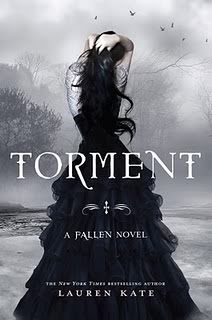
Here's an ARC that's been lost in the mail for a very long time... The cover is so lovely. I deliberately went out and found the first book, just so I can read this one.
I got this middle-grade finished novel in the mail. Kind of random.
I just started reading this one.
It seems like I've been waiting to read Delirium forever! I can't believe it's finally here!

Here's an ARC that's been lost in the mail for a very long time... The cover is so lovely. I deliberately went out and found the first book, just so I can read this one.
Saturday, February 5, 2011
Socksquatch review
Socksquatch
by Frank W. Dormer
Henry Holt & Co.
October 2010
This is a short and silly book, featuring a varied cast of monsters. Furry, orange Socksquatch is missing a sock, and lumbers about a medieval style castle asking everyone he knows if they have a sock they can spare. Simple, mostly two word sentences give the feel of the monsters' monosyllabic attempts at communication. "Got sock?" bellows Socksquatch. "Foot cold," he explains. Wayne the wolfman's foot is only covered in fur. Frank the monster is willing to share, but his socks are too big, causing a temper tantrum from Socksquatch. "Aaaaaaaaaaa!" he wails, as he continues his search. He finally commandeers a sock from an innocent damsel, blissfully content with his new comfy sock, and unaware that his original sock is now unraveling...
Socksquatch is a debut picture book from Dormer, who has also illustrated the Aggie and Ben beginning reader series by Lori Ries. The watercolor and ink illustrations with plenty of white space and just a few lines to suggest the setting give this book a clean, spare presentation perfectly in tune with the simple declarative sentences. The lime colored end pages feature line drawings of every kind of imaginable sock: tiny, polka-dotted, striped, long, elf-like, fluffy, there's even an elephant sock and a snail sock as well as an emergency ambulance sock. A quirky sense of humor throughout makes this a not-too-scary monster story appropriate for ages 3-5.
I borrowed this book from the library.
by Frank W. Dormer
Henry Holt & Co.
October 2010
This is a short and silly book, featuring a varied cast of monsters. Furry, orange Socksquatch is missing a sock, and lumbers about a medieval style castle asking everyone he knows if they have a sock they can spare. Simple, mostly two word sentences give the feel of the monsters' monosyllabic attempts at communication. "Got sock?" bellows Socksquatch. "Foot cold," he explains. Wayne the wolfman's foot is only covered in fur. Frank the monster is willing to share, but his socks are too big, causing a temper tantrum from Socksquatch. "Aaaaaaaaaaa!" he wails, as he continues his search. He finally commandeers a sock from an innocent damsel, blissfully content with his new comfy sock, and unaware that his original sock is now unraveling...
Socksquatch is a debut picture book from Dormer, who has also illustrated the Aggie and Ben beginning reader series by Lori Ries. The watercolor and ink illustrations with plenty of white space and just a few lines to suggest the setting give this book a clean, spare presentation perfectly in tune with the simple declarative sentences. The lime colored end pages feature line drawings of every kind of imaginable sock: tiny, polka-dotted, striped, long, elf-like, fluffy, there's even an elephant sock and a snail sock as well as an emergency ambulance sock. A quirky sense of humor throughout makes this a not-too-scary monster story appropriate for ages 3-5.
I borrowed this book from the library.
Friday, February 4, 2011
Nook vs. Kindle DX
I recently had the opportunity to try out a Nook (the original, not the full color Nook) and thought I'd give a review of how it compares to the Kindle, which I reviewed last year.
- My first impression on looking at the Nook was that it's quite a bit smaller than the Kindle. I was worried that it might be harder to read on a smaller screen, but I actually found it comfortingly similar to reading a mass market paperback.
- The biggest difference between the Nook and the Kindle DX, of course, is the tiny full color touch screen used for navigation on the Nook. I liked that the keyboard was there when you needed it, and disappeared when you didn't.
- Weight. I've heard quite a few complaints that the weight of the Nook is a little too cumbersome. I actually didn't mind the bottom-heavy Nook, as it gives a nice solid feeling in your hands, without being heavy enough to wear you out.
- The screen of the Nook, with e-ink, was very similar to the Kindle, with maybe just the very barest hint more glare than the Kindle. Just like the Kindle, I found myself stupidly pressing the screen expecting it to do something (I am too used to my iPhone touchscreen) and found myself surprised that you really do need light to read by, since the screen obviously does not glow.
- One option that I really, really missed was the built-in dictionary that Kindle has. No such thing on the Nook.
- The Nook included a couple of games; chess and sudoku. I tried out the chess game and found it tough to navigate the tiny, full-color touch screen, and a little dizzying to keep switching from looking at that screen to the full-size black and white screen where the whole board is displayed. I didn't think the games were really necessary, but I could see myself playing them if I were stuck at an airport and wanted to pass a little time.
- In terms of battery life, I did find the Nook wore out much more quickly than the Kindle did. But, the Nook stood up to a week of heavy reading with wi-fi mostly switched on, which I thought was more than sufficient.
- Page turns seemed just a fraction faster on the Nook. I've heard that this is due to a recent software update. The Kindle DX always hesitates oddly every time you turn the page, making it tricky to finesse when you want to press the page-turn button. The Nook had page-turn buttons smoothly integrated on either side of the screen.
- Happily, the Nook allows you to switch fonts. There aren't very many options, but it's better than not being able to switch fonts at all. I also found, when reading PDF's that the original fonts and formatting were retained, which was nice. The Kindle doesn't use pages - instead, a progress bar shows up at the bottom of the screen, saying, 30% done, or what have you. I liked that the Nook uses page numbers. You can resize the font, which of course, will change the number of pages in the book.
- Is there an option to rotate the screen on the Nook? I couldn't find one. Annoyingly, I could not figure out how to turn the screen rotation OFF on the Kindle. Sometimes, I like to curl up on my side while reading, and the Kindle DX rendered this impossible, as it always wanted to "correct" itself and be read right side up, no matter which way I turned it. With the Nook, I was able to curl up on my side and read without the screen jumping around, trying to rotate itself.
- Just like the Kindle, the Nook makes it blindingly fast and easy to purchase books. Thinking about making a purchase? A click of a button and a few seconds later, the book is yours. It's not hard to go through your personal book budget more quickly than you ever thought possible on this thing.
- The place where the Nook really shines is, of course, in lending e-books. I found it easy and intuitive to transfer e-books checked out from my library to the Nook. With the Kindle, I did figure out how to find out a few free titles, but never did master downloading PDF's. Users who are new to Overdrive (a company which licenses e-books for libraries) may find the set-up process vexing. Expect to spend a good afternoon downloading Adobe Digital Editions, setting up authentication and so on. Obviously, you will also need a valid library card, at a library which has access to Overdrive. And, secondly, good luck finding e-books that are checked in -- demand for these items are soaring at libraries everywhere. In many cases, you have to get on a waiting list for popular titles. Still, the library titles are free, and you can't beat that.
Thursday, February 3, 2011
The Vespertine review
The Vespertine
by Saundra Mitchell
Harcourt Children's Books
March 2011
The Vespertine combines historical fiction, with just a touch of mystery, supernatural occurrences and romance. In 1889, Amelia van den Broek is sent for the season from her small village in Maine to the relatively young city of Baltimore to stay with her cousin Zora, hopefully to entice a suitor for an appropriate match. While Amelia is a bit shy and overwhelmed by the city sights, Zora is exuberant and the two of them quickly become best friends. As was traditional during the time, the girls share a bed, meaning that each evening feels like a slumber party, as they whisper secrets to each other all night.
This is a world of such courtly and restrained manners that merely accidentally brushing wrists while seated next to a handsome dinner guest is enough to create a flurry of passionate feelings and enamored confusion in Amelia. Women must be tightly chaperoned at all times, and simply sneaking away to walk a few blocks down the street fills Amelia with a delicious, delirious sense of danger.
The girls make their rounds, collecting visitor's cards, attending dinner parties and balls, flirting and dancing. Zora quickly sets her heart on Thomas Rea, a doctor's son, a less than ideal, but not inappropriate choice while Amelia makes the socially disastrous mistake of becoming smitten with Nathaniel Witherspoon, an impoverished artist who makes his living as a professional party guest.
I was intrigued by the idea of the professional fourteenth guest, hired specifically as to avoid unlucky dinner parties of 13 members. It turns out this is based on a real tradition, originating in France, called a quatorzieme.
The plot thickens when Amelia's psychic gift begins to present itself. She has the ability to see the future, in absorbing visions which strike her just at the moment of sunset, or "the vespers" of the early evening. In an era when seances and mediums were all the rage, Amelia quickly is informally billed as, "Maine's Own Mystic" and soon finds herself and her cousin Zora very much in demand in society circles, as all the young women in town are eager to have their fortunes read.
I loved the scene where a rich heiress peremptorily calls Amelia for an audience, and presents her demands for fortunes to be told for her and all her party guests. As Amelia explains the limits of her gift - she can only see the future just at sunset, and only for one person at a time, she tells her, "Only a fraud can promise you everything, it's truth that has limits." I thought it made sense that Amelia becomes nearly drunk with the feeling of power her gift has given her. Towards the very end of the book, Amelia discovers she does have the ability to tell more than one fortune at once, by "spirit writing" as she goes into her evening trance, which made me curious how else the limits of her gift could be pushed.
I was happy to see that the cover of the book had been changed from the ARC. The ARC cover hints at her sunset abilities with it's rich orange tones, but the character's face is hidden by the font, and the necklace seems overly important. I thought the new cover, with it's dark, rushed, desperate feel was much more appropriate.
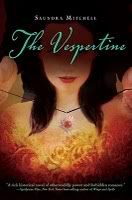
The only thing that marred the book for me was the discordant timeline. The story begins in the fall of 1889, with Amelia as a ruined madwoman, being kept in her brother's attic. In flashbacks, we learn the story of her wonderfully adventurous summer in Baltimore. While reading the story, it was hard to immerse oneself in the surroundings and enjoy the gaiety of the parties and balls knowing that Amelia has such a terrible future ahead of her. I was surprised and delighted then, by the ending of the book, which really turns everything around for Amelia and Nathaniel. The ending answers a lot of questions, and leaves the reader feeling very satisfied, yet with just enough mystery to warrant a sequel. This is a beautifully written book, with rich, lyrical prose that transports you to another time. I highly recommend it.
I received a free copy of this book from the publisher.
by Saundra Mitchell
Harcourt Children's Books
March 2011
The Vespertine combines historical fiction, with just a touch of mystery, supernatural occurrences and romance. In 1889, Amelia van den Broek is sent for the season from her small village in Maine to the relatively young city of Baltimore to stay with her cousin Zora, hopefully to entice a suitor for an appropriate match. While Amelia is a bit shy and overwhelmed by the city sights, Zora is exuberant and the two of them quickly become best friends. As was traditional during the time, the girls share a bed, meaning that each evening feels like a slumber party, as they whisper secrets to each other all night.
This is a world of such courtly and restrained manners that merely accidentally brushing wrists while seated next to a handsome dinner guest is enough to create a flurry of passionate feelings and enamored confusion in Amelia. Women must be tightly chaperoned at all times, and simply sneaking away to walk a few blocks down the street fills Amelia with a delicious, delirious sense of danger.
The girls make their rounds, collecting visitor's cards, attending dinner parties and balls, flirting and dancing. Zora quickly sets her heart on Thomas Rea, a doctor's son, a less than ideal, but not inappropriate choice while Amelia makes the socially disastrous mistake of becoming smitten with Nathaniel Witherspoon, an impoverished artist who makes his living as a professional party guest.
I was intrigued by the idea of the professional fourteenth guest, hired specifically as to avoid unlucky dinner parties of 13 members. It turns out this is based on a real tradition, originating in France, called a quatorzieme.
The plot thickens when Amelia's psychic gift begins to present itself. She has the ability to see the future, in absorbing visions which strike her just at the moment of sunset, or "the vespers" of the early evening. In an era when seances and mediums were all the rage, Amelia quickly is informally billed as, "Maine's Own Mystic" and soon finds herself and her cousin Zora very much in demand in society circles, as all the young women in town are eager to have their fortunes read.
I loved the scene where a rich heiress peremptorily calls Amelia for an audience, and presents her demands for fortunes to be told for her and all her party guests. As Amelia explains the limits of her gift - she can only see the future just at sunset, and only for one person at a time, she tells her, "Only a fraud can promise you everything, it's truth that has limits." I thought it made sense that Amelia becomes nearly drunk with the feeling of power her gift has given her. Towards the very end of the book, Amelia discovers she does have the ability to tell more than one fortune at once, by "spirit writing" as she goes into her evening trance, which made me curious how else the limits of her gift could be pushed.
I was happy to see that the cover of the book had been changed from the ARC. The ARC cover hints at her sunset abilities with it's rich orange tones, but the character's face is hidden by the font, and the necklace seems overly important. I thought the new cover, with it's dark, rushed, desperate feel was much more appropriate.

The only thing that marred the book for me was the discordant timeline. The story begins in the fall of 1889, with Amelia as a ruined madwoman, being kept in her brother's attic. In flashbacks, we learn the story of her wonderfully adventurous summer in Baltimore. While reading the story, it was hard to immerse oneself in the surroundings and enjoy the gaiety of the parties and balls knowing that Amelia has such a terrible future ahead of her. I was surprised and delighted then, by the ending of the book, which really turns everything around for Amelia and Nathaniel. The ending answers a lot of questions, and leaves the reader feeling very satisfied, yet with just enough mystery to warrant a sequel. This is a beautifully written book, with rich, lyrical prose that transports you to another time. I highly recommend it.
I received a free copy of this book from the publisher.
Subscribe to:
Posts (Atom)
